- Home
- Jeffery Deaver
The Burning Wire
The Burning Wire Read online
Suspense master Jeffery Deaver "is able to fool even the most experienced readers with his right-angle turns" (Booklist) in these acclaimed New York Times and international bestsellers!
The ninth novel in his "simply outstanding" (San Jose Mercury News) Lincoln Rhyme series
THE BURNING WIRE
"Sterling. . . . Not even the brilliant Rhyme can foresee the shocking twists the case will take in this electrically charged thriller."
--Publishers Weekly (starred review) "Deaver, master of the plot twist, does his usual magic--no matter how hard you try, you can't figure out what he's about to spring on you--and, as an added tension-intensifier, the Watchmaker, the nasty villain introduced in The Cold Moon, is still behind the scenes, just outside our peripheral vision. Another winner from the dependable Deaver."
--Booklist
"Only the canniest readers will see which of [the] grace notes are red herrings and which are linked in crucial ways to the case at hand . . . by the devious Deaver."
--Kirkus Reviews
This title is also available in an audio edition The "ingeniously devious" (People) Jeffery Deaver delights readers with two pulse-pounding novels featuring investigative agent Kathryn Dance
ROADSIDE CROSSES
Chosen as a Hot Summer Thriller on TheDailyBeast.com!
"A gripping story peopled with memorable characters. No surprise. Jeffery Deaver is grand master of the ticking-clock thriller."
--Kathy Reichs, #1 New York Times bestselling author of Spider Bones "Deaver's got the world of social networking and blogs down cold. . . . That dose of realism adds a fresh, contemporary edge."
--David Montgomery, TheDailyBeast.com
"The techno-savvy Deaver . . . has one of those puzzle-loving minds you just can't trust."
--Marilyn Stasio, The New York Times "Clever and twisted. . . . Don't miss this one."
--Library Journal
THE SLEEPING DOLL
"[An] intricately plotted thriller. . . . A dazzling mental contest."
--Marilyn Stasio, The New York Times "The chase is on, and so are the surprises."
--Sacramento Bee
Also from Jeffery Deaver, whose "labyrinthine plots are astonishing" (The New York Times Book Review) . . . Chosen as the 2009 "Best Novel of the Year" by the International Thriller Writers organization
THE BODIES LEFT BEHIND
"A tour de force. . . . The suspense never flags. . . . Deaver has no rivals in the realm of sneaky plot twists."
--Kirkus Reviews
"The pace is terrific, the suspense inexorable. . . ."
--The Guardian (U.K.)
"Deaver is such a good puppet master that he makes us believe whatever he wants us to believe . . . without telling us a single lie. . . . It's not until we're well more than halfway through the book that we even begin to suspect that we might have made some dangerous mistakes . . . but by then, it's way too late, and we are completely at Deaver's mercy."
--Booklist (starred review)
"Hurtles along at 100 m.p.h. . . . An edge-of-the-seat read."
--Sunday Express (U.K.), 4 stars "He makes the characters live and breathe. . . . Read this and no country walk will ever be the same again."
--Daily Express (U.K.)
"Not just an adrenaline-charged manhunt but a game of deception and multiple double-cross that keeps the reader guessing right up to the final page."
--The Times (London)
Thank you for purchasing this Simon & Schuster eBook.
* * *
Join our mailing list and get updates on new releases, deals, bonus content and other great books from Simon & Schuster and Simon & Schuster.
CLICK HERE TO SIGN UP
or visit us online to sign up at
eBookNews.SimonandSchuster.com
Contents
Part I: The Troubleman
Chapter 1
Chapter 2
Chapter 3
Chapter 4
Chapter 5
Chapter 6
Chapter 7
Chapter 8
Chapter 9
Chapter 10
Chapter 11
Chapter 12
Chapter 13
Chapter 14
Chapter 15
Chapter 16
Chapter 17
Chapter 18
Chapter 19
Chapter 20
Chapter 21
Chapter 22
Chapter 23
Chapter 24
Part II: The Path of Least Resistance
Chapter 25
Chapter 26
Chapter 27
Chapter 28
Chapter 29
Chapter 30
Chapter 31
Chapter 32
Chapter 33
Chapter 34
Chapter 35
Chapter 36
Chapter 37
Chapter 38
Chapter 39
Chapter 40
Chapter 41
Chapter 42
Chapter 43
Chapter 44
Chapter 45
Chapter 46
Chapter 47
Chapter 48
Chapter 49
Chapter 50
Chapter 51
Chapter 52
Chapter 53
Chapter 54
Part III: Juice
Chapter 55
Chapter 56
Chapter 57
Chapter 58
Chapter 59
Chapter 60
Chapter 61
Chapter 62
Chapter 63
Chapter 64
Chapter 65
Chapter 66
Chapter 67
Chapter 68
Chapter 69
Chapter 70
Chapter 71
Chapter 72
Chapter 73
Chapter 74
Chapter 75
Chapter 76
Chapter 77
Chapter 78
Chapter 79
Chapter 80
Chapter 81
Chapter 82
Chapter 83
Chapter 84
Chapter 85
Part IV: The Last Case
Chapter 86
Chapter 87
Acknowledgments
'Edge' Excerpt
About Jeffery Deaver
For editor extraordinaire, Marysue Rucci
"Hell, there are no rules here. We're trying to accomplish something."
--THOMAS ALVA EDISON, ON CREATING THE FIRST ELECTRIC GRID
Thirty-seven hours until Earth Day
I
THE TROUBLEMAN
"From his neck down a man is worth a couple of dollars a day, from his neck up he is worth anything that his brain can produce."
--THOMAS ALVA EDISON
Chapter 1
SITTING IN THE control center of Algonquin Consolidated Power and Light's sprawling complex on the East River in Queens, New York, the morning supervisor frowned at the pulsing red words on his computer screen.
Critical failure.
Below them was frozen the exact time: 11:20:20:003 a.m.
He lowered his cardboard coffee cup, blue and white with stiff depictions of Greek athletes on it, and sat up in his creaky swivel chair.
The power company control center employees sat in front of individual workstations, like air traffic controllers. The large room was brightly lit and dominated by a massive flat-screen monitor, reporting on the flow of electricity throughout the power grid known as the Northeastern Interconnection, which provided electrical service in New York, Pennsylvania, New Jersey and Connecticut. The architecture and decor of the control center were quite modern--if the yea
r were 1960.
The supervisor squinted up at the board, which showed the juice arriving from generating plants around the country: steam turbines, reactors and the hydroelectric dam at Niagara Falls. In one tiny portion of the spaghetti depicting these electrical lines, something was wrong. A red circle was flashing.
Critical failure . . .
"What's up?" the supervisor asked. A gray-haired man with a taut belly under his short-sleeved white shirt and thirty years' experience in the electricity business, he was mostly curious. While critical-incident indicator lights came on from time to time, actual critical incidents were very rare.
A young technician replied, "Says we have total breaker separation. MH-Twelve."
Dark, unmanned and grimy, Algonquin Consolidated Substation 12, located in Harlem--the "MH" for Manhattan--was a major area substation. It received 138,000 volts and fed the juice through transformers, which stepped it down to 10 percent of that level, divided it up and sent it on its way.
Another message appeared.
MH-12 offline. RR to affected service area from MH-17, MH-10, MH-13, NJ-18.
"We've got load rerouting," somebody called unnecessarily.
When substation MH-12 went down, the computer automatically began filling customer demand by rerouting the juice from other locations.
"No dropouts, no brownouts," another tech called.
Electricity in the grid is like water coming into a house from a single main pipe and flowing out through many open faucets. When one is closed, the pressure in the others increases. Electricity's the same, though it moves a lot more quickly than water--nearly 700 million miles an hour. And because New York City demanded a lot of power, the voltages--the electrical equivalent of water pressure--in the substations doing the extra work were running high.
But the system was built to handle this and the voltage indicators were still in the green.
What was troubling the supervisor, though, was why the circuit breakers in MH-12 had separated in the first place.
"Get a troubleman over to MH-Twelve. Could be a bum cable. Or a short in the--"
Just then a second red light began to flash.
Critical failure.
NJ-18 offline.
Another area substation, located near Paramus, New Jersey, had gone down. It was one of those taking up the slack in Manhattan-12's absence.
The supervisor made a sound, half laugh, half cough. A perplexed frown screwed into his face. "What the hell's going on? The load's within tolerances."
"Sensors and indicators all functioning," one technician called.
The supervisor stared at the screen, waited for the next logical step: letting them know which new substation--or stations--would kick in to fill the gap created by the loss of NJ-18.
But no such message appeared.
The three Manhattan substations, 17, 10 and 13, continued alone in providing juice to two service areas of the city that would otherwise be dark. The computer program wasn't doing what it should have: bringing in power from other stations to help. Now the amount of electricity flowing into and out of each of those three stations was growing dramatically.
The supervisor rubbed his beard and, after waiting, futilely, for another substation to come online, ordered his senior assistant, "Manually move supply into the eastern service area of MH-Twelve."
"Yessir."
After a moment the supervisor snapped, "No, now."
"Hm. I'm trying."
"Trying. What do you mean, trying?" The task involved simple keyboard strokes.
"The switchgear's not responding."
"Impossible!" The supervisor walked down several short steps to the technician's computer. He typed commands he knew in his sleep.
Nothing.
The voltage indicators were at the end of the green. Yellow loomed.
"This isn't good," somebody muttered. "This's a problem."
The supervisor ran back to his desk and dropped into his chair. His granola bar and Greek athlete cup fell to the floor.
And then another domino fell. A third red dot, like a bull's-eye on a target, began to throb, and in its aloof manner the SCADA computer reported: Critical failure.
MH-17 offline.
"No, not another one!" somebody whispered.
And, as before, no other substation stepped up to help satisfy the voracious demands of New Yorkers for energy. Two substations were doing the work of five. The temperature of the electric wires into and out of those stations was growing, and the voltage level bars on the big screen were well into the yellow.
MH-12 offline. NJ-18 offline.
MH-17 offline. RR to affected
service areas from MH-10, MH-13.
The supervisor snapped, "Get more supply into those areas. I don't care how you do it. Anywhere."
A woman at a nearby control booth sat up fast. "I've got forty K I'm running through feeder lines down from the Bronx."
Somebody else was able to bring some juice down from Connecticut.
The voltage indicator bars continued to rise but more slowly now.
Maybe they had this under control. "More!"
But then the woman stealing power from the Bronx said in a choking voice, "Wait, the transmission's reduced itself to twenty thousand. I don't know why."
This was happening throughout the region. As soon as a tech was able to bring in a bit more current to relieve the pressure, the supply from another location dried up.
And all of this drama was unfolding at breathtaking speeds.
700 million miles an hour . . .
And then yet another red circle, another bullet wound.
Critical failure.
MH-13 offline.
This was the equivalent of a huge reservoir of water trying to shoot through a single tiny spigot, like the kind that squirts cold water out of a refrigerator door. The voltage surging into MH-10, located in an old building on West Fifty-seventh Street in the Clinton neighborhood of Manhattan, was four or five times normal load and growing. The circuit breakers would pop at any moment, averting an explosion and a fire, but returning a good portion of Midtown to colonial times.
And then: "Oh, Jesus, Lord!" somebody cried.
The supervisor didn't know who it was; everybody was staring at their screens, heads down, transfixed. "What?" he raged. "I don't want to keep hearing that kind of thing. Tell me!"
"The breaker settings in Manhattan-Ten! Look! The breakers!"
Oh, no. No. . . .
The circuit breakers in MH-10 had been reset. They would now allow through their portal ten times the safe load.
If the Algonquin control center couldn't reduce the pressure of the voltage assaulting the substation soon, the lines and switchgear inside the place would allow through a lethally high flood of electricity. The substation would explode. But before that happened the juice would race through the distribution feeder lines into belowground transformer boxes throughout the blocks south of Lincoln Center and into the spot networks in office buildings and big high-rises. Some breakers would cut the circuit but some older transformers and service panels would just melt into a lump of conductive metal and let the current continue on its way, setting fires and exploding in arc flashes that could burn to death anybody near an appliance or wall outlet.
For the first time the supervisor thought: Terrorists. It's a terror attack. He shouted, "Call Homeland Security and the NYPD. And reset them, goddamn it. Reset the breakers."
"They're not responding. I'm locked out of MH-Ten."
"How can you be fucking locked out?"
"I don't--"
"Is anybody inside? Jesus, if they are, get them out now!" Substations were unmanned, but workers occasionally went inside for routine maintenance and repairs.
"Sure, okay."
The indicator bars were now into the red.
"Sir, should we shed load?"
Grinding his teeth, the supervisor was considering this. Also known as a rolling blackout, shedding load was an
extreme measure in the power business. "Load" was the amount of juice that customers were using. Shedding was a manual, controlled shutdown of certain parts of the grid to prevent a larger crash of the system.
It was a power company's last resort in the battle to keep the grid up and would have disastrous consequences in the densely populated portion of Manhattan that was at risk. The damage to computers alone would be in the tens of millions, and it was possible that people would be injured or even lose their lives. Nine-one-one calls wouldn't get through. Ambulances and police cars would be stuck in traffic, with stoplights out. Elevators would be frozen. There'd be panic. Muggings and looting and rapes invariably rose during a blackout, even in daylight.
Electricity keeps people honest.
"Sir?" the technician asked desperately.
The supervisor stared at the moving voltage indicator bars. He grabbed his own phone and called his superior, a senior vice president at Algonquin. "Herb, we have a situation." He briefed the man.
"How'd this happen?"
"We don't know. I'm thinking terrorists."
"God. You called Homeland Security?"
"Yeah, just now. Mostly we're trying to get more power into the affected areas. We're not having much luck."
His boss thought for a moment. "There's a second transmission line running through Manhattan-Ten, right?"
The supervisor looked up at the board. A high-voltage cable went through the substation and headed west to deliver juice to parts of New Jersey. "Yes, but it's not online. It's just running through a duct there."
"But could you splice into it and use that for supply to the diverted lines?"
"Manually? . . . I suppose, but . . . but that would mean getting people inside MH-Ten. And if we can't hold the juice back until they're finished, it'll flash. That'll kill 'em all. Or give 'em third-degrees over their entire bodies."
A pause. "Hold on. I'm calling Jessen."
Algonquin Consolidated's CEO. Also known, privately, as "The All-Powerful."
As he waited, the supervisor stared at the techs surrounding him. He kept staring at the board too. The glowing red dots.
Critical failure . . .
Finally the supervisor's boss came back on. His voice cracked. He cleared his throat and after a moment said, "You're supposed to send some people in. Manually splice into the line."
"That's what Jessen said?"
Another pause. "Yes."
The supervisor whispered, "I can't order anybody in there. It's suicide."
"Then find some volunteers. Jessen said you are not, understand me, not to shed load under any circumstances."
Chapter 2

 A Maiden's Grave
A Maiden's Grave Trouble in Mind: The Collected Stories - 3
Trouble in Mind: The Collected Stories - 3 The October List
The October List The Deliveryman
The Deliveryman Garden of Beasts
Garden of Beasts Triple Threat
Triple Threat The Broken Window
The Broken Window The Steel Kiss
The Steel Kiss Twisted: The Collected Stories - 1
Twisted: The Collected Stories - 1 Solitude Creek
Solitude Creek Edge
Edge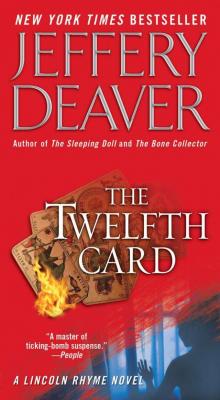 The Twelfth Card
The Twelfth Card The Bone Collector
The Bone Collector The Stone Monkey
The Stone Monkey The Sleeping Doll
The Sleeping Doll The Vanished Man
The Vanished Man The Kill Room
The Kill Room The Burial Hour
The Burial Hour An Acceptable Sacrifice
An Acceptable Sacrifice The Coffin Dancer
The Coffin Dancer The Lesson of Her Death
The Lesson of Her Death The Empty Chair
The Empty Chair The Burning Wire
The Burning Wire Watchlist
Watchlist Captivated
Captivated The Cold Moon
The Cold Moon Speaking in Tongues
Speaking in Tongues Buried (Hush collection)
Buried (Hush collection) A Textbook Case
A Textbook Case The Victims' Club
The Victims' Club Nothing Good Happens After Midnight: A Suspense Magazine Anthology
Nothing Good Happens After Midnight: A Suspense Magazine Anthology The Bodies Left Behind
The Bodies Left Behind Turning Point
Turning Point Hard News
Hard News The Blue Nowhere
The Blue Nowhere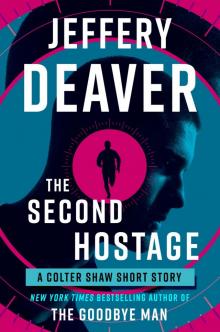 The Second Hostage
The Second Hostage The Never Game
The Never Game The Devil's Teardrop
The Devil's Teardrop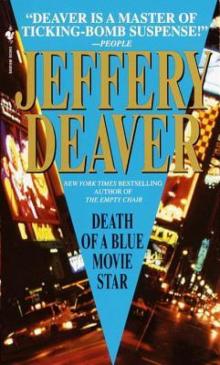 Death of a Blue Movie Star
Death of a Blue Movie Star The Skin Collector
The Skin Collector The Final Twist
The Final Twist Surprise Ending
Surprise Ending Twisted: The Collected Stories
Twisted: The Collected Stories Solitude Creek: Kathryn Dance Book 4
Solitude Creek: Kathryn Dance Book 4 Twisted: The Collected Short Stories of Jeffery Deaver
Twisted: The Collected Short Stories of Jeffery Deaver Rhymes With Prey
Rhymes With Prey Shallow Graves
Shallow Graves Bloody River Blues
Bloody River Blues Trouble in Mind: The Collected Stories, Volume 3
Trouble in Mind: The Collected Stories, Volume 3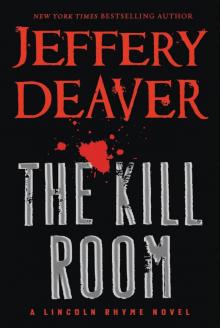 Lincoln Rhyme 10 - The Kill Room
Lincoln Rhyme 10 - The Kill Room The Cutting Edge
The Cutting Edge Where the Evidence Lies
Where the Evidence Lies Hell's Kitchen
Hell's Kitchen Twisted
Twisted The Goodbye Man
The Goodbye Man The burning wire lr-9
The burning wire lr-9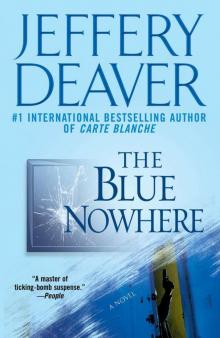 The Blue Nowhere: A Novel
The Blue Nowhere: A Novel Roadside Crosses: A Kathryn Dance Novel
Roadside Crosses: A Kathryn Dance Novel The Debriefing
The Debriefing More Twisted: Collected Stories, Vol. II
More Twisted: Collected Stories, Vol. II The Kill Room lr-10
The Kill Room lr-10 A Dish Served Cold
A Dish Served Cold Bloody River Blues: A Location Scout Mystery
Bloody River Blues: A Location Scout Mystery The Bodies Left Behind: A Novel
The Bodies Left Behind: A Novel Where the Evidence Lies (A Mulholland / Strand Magazine Short)
Where the Evidence Lies (A Mulholland / Strand Magazine Short) A Textbook Case (lincoln rhyme)
A Textbook Case (lincoln rhyme) Copycat
Copycat The Chopin Manuscript: A Serial Thriller
The Chopin Manuscript: A Serial Thriller Carte Blanche
Carte Blanche The Sequel
The Sequel